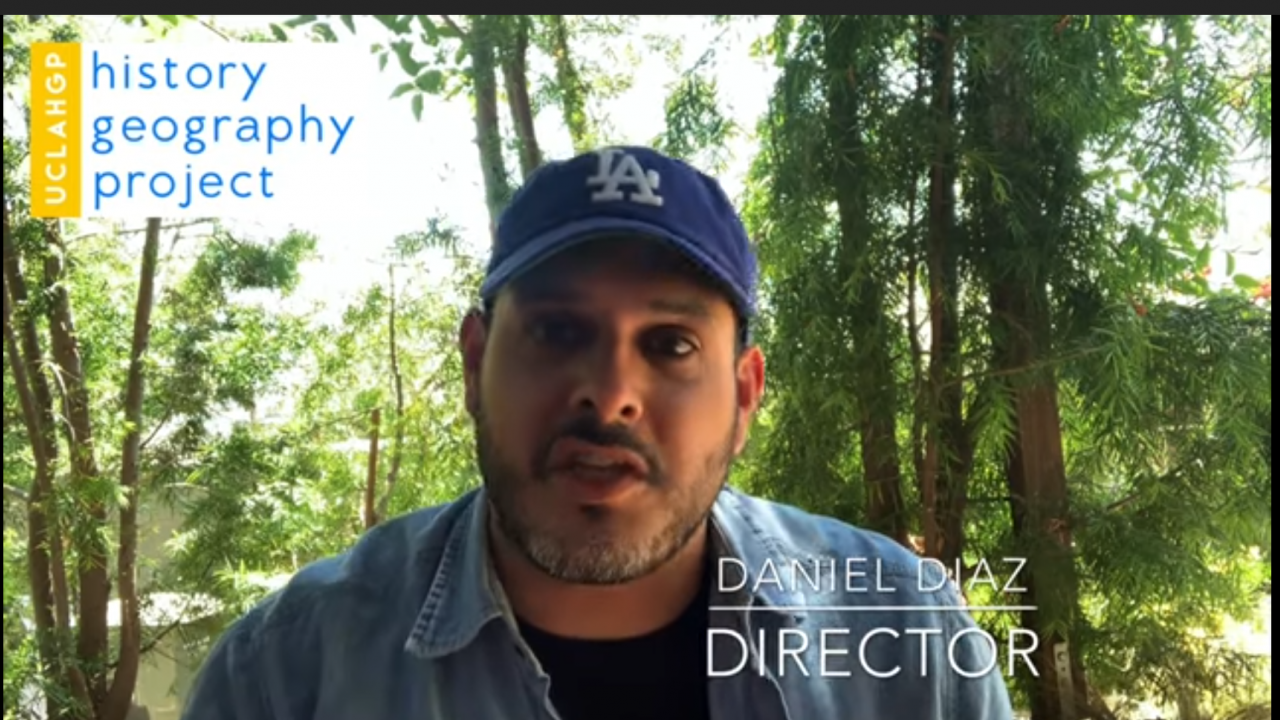
UCLA Video Highlights Best Remote Teaching Practices
The UCLA History-Geography Project’s (HGP) network of teachers is passionate about supporting students and each other during this unprecedented time in education. Daniel Diaz, director of the project, recently reached out to teachers to ask them to record reflections on what has worked in their virtual classrooms. The result is this thoughtful teacher video produced by the HGP that highlights best practices for online teaching. This is part of a larger effort by the HGP to use YouTube as a space to support teachers by providing them access to content to watch at their convenience (you can subscribe to the HGP YouTube channel here).
Teachers have one of the most challenging jobs during this pandemic. Not only are they being asked to quickly adapt an in-person job to an online setting, but they are also important adult figures in their (often overwhelmed) students’ lives and feel the responsibility to provide stability and a sense of normalcy in an otherwise chaotic time. What is remarkable is just how quickly the teachers in this video have managed to distill their instruction to its most essential parts while also continuing to support their students’ personal well-being. With limited student contact possible each week, these teachers have developed creative methods for reaching students with content by capitalizing on the opportunities presented by technology, while also finding ways to keep socially-deprived students interacting with one another in predictable spaces.
The HGP video is full of teacher advice that runs the runs the gamut from the practical to the touching. Multiple teachers reiterated the need to keep it simple, with straightforward instructions and assignments that are doable for students with limited technology and time. One teacher shared his weekly one-page sheet that students use to find all assignments and links. Discipline-specific practices include creating an inquiry question that guides instruction for the week, and identifying the primary and secondary sources students need to answer it. Teachers are not missing the chance to give their students significant assignments, such as projects that examine a figure in the past or today who has worked to improve her community, or to study the disproportionate impact of COVID-19 on communities of color. Finally, teachers are honoring the emotional demands of their current work and highlighting the need to be patient and kind with each other and students, perhaps through regular check-ins with students regarding their well-being. Most teachers are tackling each of these approaches in any given week, not wanting students to miss an opportunity to learn and be inspired, though also being careful not to ask too much of students when their personal lives may be completely upended. It is a difficult balancing act that teachers must strive to achieve, with no clear rules of engagement. Nowhere in teacher preparation programs did educators receive training for a situation like the one we're in now.
The care with which the teachers in this video are approaching their craft suggests that they will be prepared to continue to adapt their instruction as schools weather what comes next. Critical to this success will be finding the time and space for teachers to continue to collaborate, support and learn from one another. The UCLA History-Geography Project, and History Project sites across the state, are working to help provide these opportunities for teachers today and in the months to come. We extend our deep felt gratitude for all the educators working to keep our students learning and well. Our communities are stronger for this effort.
